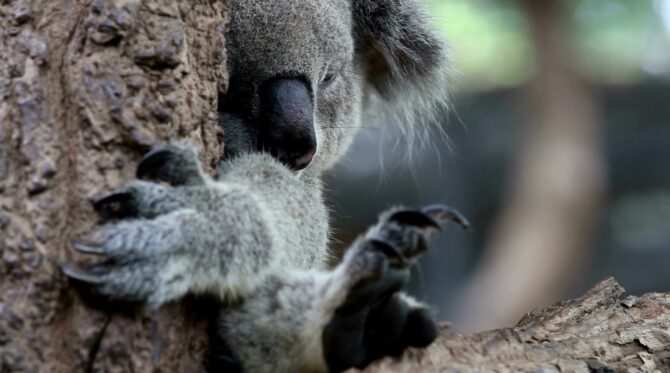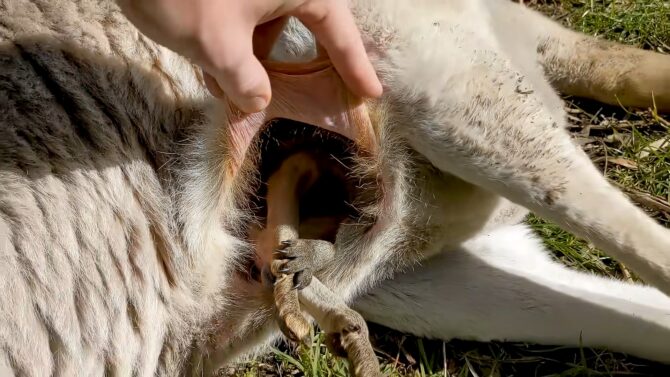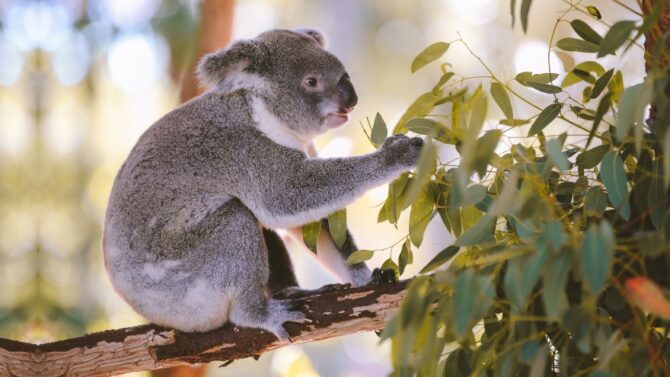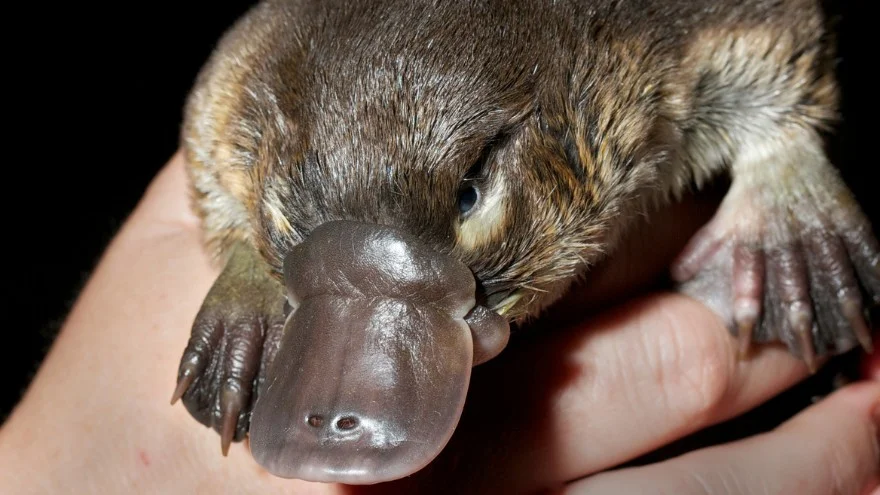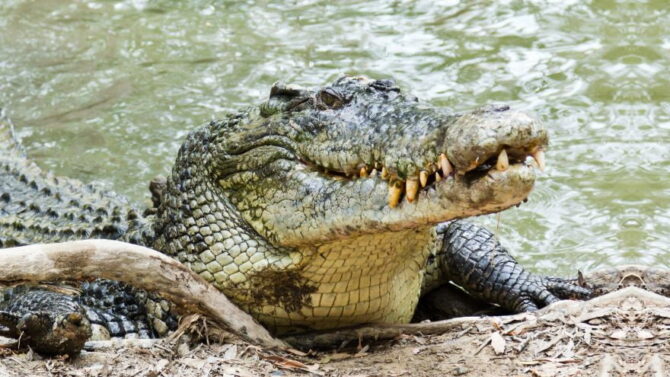Due to its location in the Southern Hemisphere, Australia/Oceania is frequently referred to as the “land down under.”
It is an extremely diversified island continent that is home to numerous plant and animal species.
Being the only country in the world to encompass a complete continent, it serves as both a country and a continent.
Despite being one of the smallest continents, Australia is the sixth-largest country in the world, and its enormous expanse provides a range of habitats for the species that live there.
Wildlife in Australia includes donkeys, kangaroos, water buffaloes, and koalas, among other animals. Some of the deadliest animals on Earth call this region home.
The country is home to various dangerous animals, including snakes, spiders, and sea creatures.
Australia has a frightening image due to its incredible variety of predators and deadly animals.
This article contains further information about this island continent and its wildlife.
Wildlife in Australia – The Most Popular Animals In Australia
No matter where you travel in Australia, there will undoubtedly be some interesting animals nearby because the continent boasts some of the most distinctive and diversified wildlife in the entire globe.
Some of the most popular animals in Australia are koalas, kangaroos, and wombats.
Koala (Phascolarctos cinereus)

Although they are not Australia’s national animal, koalas are a significant part of its national identity. Although individual koala populations have decreased over the past 200 years, their distribution does not appear to have changed.
Most of Queensland (starting in the Atherton Tablelands west of Cairns and moving south), NSW, Victoria, and a tiny portion of South Australia are all in Eastern Australia, where they can be found.
Conservationists caution that these cherished species risk going extinct if habitat loss persists.
The koala is an Australian native marsupial and arboreal herbivore. The only surviving member of the Phascolarctidae family, wombats, are its closest living relatives.
Its robust, tailless body, enormous head, round, fluffy ears, and large, spoon-shaped nose make it easy to identify.
The color of a koala can be anything from silver gray to chocolate brown. Generally speaking, northern population koalas are smaller and lighter in color than their southern counterparts.
Kangaroo (Macropus)

The red kangaroo (Macropus rufus), sometimes referred to as the giant red kangaroo, is Australia’s national animal.
It is the largest native land mammal to Australia, can survive on very little water, and is frequently seen on the vast plains of the interior.
In Australia, red kangaroos can be found all over western and central Australia. Scrubland, grassland, and desert environments are all within their range. It frequently lives in open areas with a few trees for shade.
The largest kangaroo species, the red kangaroo, may be identified from other kangaroo species by the black and white patches on its cheeks and the wide white stripe that runs from the corner of its mouth to its ear.
They have a conservation classification of “least concern.” However, they are protected by Australian legislation, just like all other animals.
Wombat (Vombatidae)
The Vombatidae family includes wombats. Wombats are quadrupedal marsupials with short legs and strong muscles that are indigenous to Australia.
They live in isolated areas in Epping Forest National Park, central Queensland and other forested, mountainous, and heathland areas of southern and eastern Australia, including Tasmania. They are adaptable and habitat tolerant.
In the wild, wombats are intelligent, tenacious little creatures who enjoy returning to their burrow after searching for food.
Additionally, they are shy creatures who avoid interacting with others and remain to themselves. Wombats may appear cute, but they have powerful claws and pointed teeth.
Native Animals in Australia
Due to Australia’s prolonged isolation from other continents following its breakup from Gondwana around 40 million years ago, there is a high level of endemism in the country.
Over 80% of the plants, animals, reptiles, and frogs found in Australia are exclusive to that country and cannot be found anywhere else in the world.
Until Australia migrated closer to South-East Asia some 15–20 million years ago, Australian mammals were evolving separately from mammals elsewhere in the world.1
Discover eight of the cutest unique animal species in Australia by reading on.
Bandicoot (Peramelidae)
Bandicoots are small, omnivorous marsupials frequently mistaken for rodents but are more closely related to rabbits genetically.
They are mammals found around Australia and frequently seen in New South Wales’ coastal regions. They may survive in various environments, including heath, wet and dry woodlands, and rainforests.
Because of their size, bandicoots are easy prey for predators; thus, they choose hiding places like woodlands and swamps, where they can survive. They feed on fruits, berries, nuts, insects, and small rodents in this area.
Duck-Billed Platypus (Ornithorhynchus anatinus)
The platypus is a monotreme, a species of mammal that gives birth to its young via eggs rather than live delivery.
It has one of the most peculiar appearances of any mammal in Australia, if not the entire globe.
It lives in small streams and rivers throughout a wide range, from the tropical rainforests of coastal Queensland as far north as the foot of the Cape York Peninsula to the chilly highlands of Tasmania and the Australian Alps (they are only present in all of eastern Australia but absent from far northern states.)
Echidna (Tachyglossidae)
Echidnas, also called spiny anteaters are monotremes coated in quills that are a member of the Tachyglossidae family.
The only live mammal egg-layers and remaining members of the order Monotremata are the four extant echidna species and the platypus.
Tasmania, King Island, Flinders Island, Kangaroo Island, and mainland Australia are all home to echidnas in addition to New Guinea.
They are the most widely distributed native mammal in Australia, inhabiting nearly all ecosystems, from deserts to mountains covered in snow.
Wallaby (Notamacropus)
A wallaby is a member of the Macropodidae family of small to medium-sized macropods. With populations introduced in New Zealand, Hawaii, the United Kingdom, and other nations, it is indigenous to Australia and New Guinea.
Different species in Australia favor various habitats. Rock wallabies inhabit rocky slopes, boulders, sandstone outcrops, and caves nearly exclusively.
The most noticeable difference between kangaroos and wallabies is that, despite having similar appearances and being members of the same taxonomic family, they differ in size, weight, and movement speed.
Dingo (Canis lupus dingo)
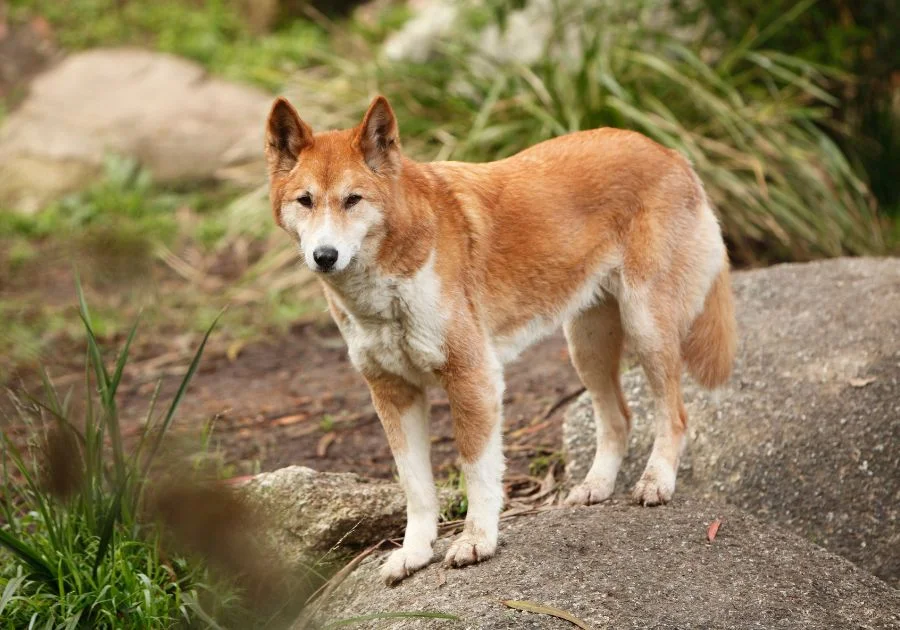
The dingo, also known as the Warrigal, is an Australian-born member of the Canidae family’s ancient (basal) lineage of dogs.
It is a medium-sized animal with a lean, firm body that has been enhanced for speed, agility, and endurance. The three basic coat colors of the dingo are creamy white, black and tan, or light ginger or tan.
Most of Australia is home to these wild dog species, while Tasmania and the southeast are devoid of them.
The temperate areas of eastern Australia, the alpine moorlands of the eastern highlands, the hot, arid deserts of central Australia, and the tropical forests and wetlands of northern Australia are just a few diverse habitats where they can be found.
Tasmanian Devil (Sarcophilus harrisii)
The Tasmanian devil is a marsupial carnivore from the Dasyuridae family. This mammal was once native to Australia but can only be found on Tasmania, an Australian island.
They inhabit mixed sclerophyll rainforests, open, dry sclerophyll forests, and coastal heaths. Although they can be found in various settings, Tasmanian devils favor open woodlands and forests.
Emu (Dromaius novaehollandiae)
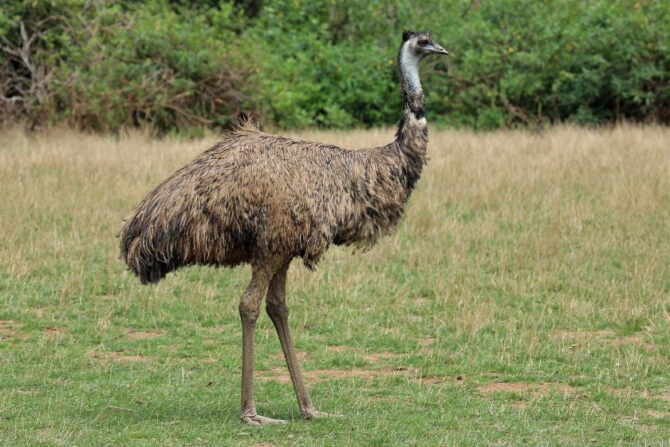
The emu, a member of the Dromaiidae family, is the second-tallest living bird after the ostrich, another member of the ratite family.
It is the only surviving member of the genus Dromaius and the largest native bird of Australia, where it is endemic.
Most mainland Australia is included in the emu’s range, but once European settlers arrived in Australia in 1788, the Tasmanian, Kangaroo Island, and King Island subspecies went extinct.2
They inhabit many environments, including broad desert plains and tropical forests, although they stay away from densely inhabited and forested areas.
Kookaburra (Dacelo novaeguineae)
Kookaburras are terrestrial tree kingfishers of the genus Dacelo native to Australia and New Guinea and part of the Alcedinidae family.
Its name is a loanword from the Wiradjuri language, guuguubarra, an onomatopoeic description of its call that sounds like an evil chuckle.
Other names for kookaburra are laughing kookaburra and laughing jackass. In addition to suburban areas with tall trees or close to running water, they can be found in environments ranging from humid woodland to desert savannah.
They can be found practically anywhere with open patches, adequate hunting grounds, and trees large enough to house their nests.
Native Birds in Australia
Australia is a haven for birdwatchers with its estimated 850 different bird species.3 Australian native birds that are well-known include:
Rock Parrot (Neophema petrophila)
The Rock Parrot is a stocky, chubby grass parrot that is unique to coastal areas in southern Australia and belongs to the Psittaculidae family.
In pairs and small flocks, these largely terrestrial parrot species can be spotted feeding in the early morning and late afternoon.
Although it is uncommon in the Fleurieu Peninsula, the rock parrot is widespread along southern Australia’s coastline, where it can be found as far east as Lake Alexandrina and Goolwa.
It only occurs along coastlines and offshore rocky islands, where it frequents windswept coastal dunes, mangrove swamps, and salty swamps. Rarely is it observed farther away from the sea than a few hundred meters.
Little Penguin (Eudyptula minor)
Blue penguins and fairy penguins are other names for little penguins. They are the smallest penguins currently recognized and distinguished by their small stature and light blue to dark gray plumage. They are members of the order Sphenisciformes.
Little penguins live in various environments, including savannas, rocky areas along the shoreline, and woods, particularly scrub forests, along the southern shores of Australia, from close to Perth in Western Australia to around Coffs Harbour in northern North South Wales.
Cassowary (Casuarius)
Emus and cassowaries are both flightless birds. They are the Casuariidae family’s heaviest member and the heaviest bird in Australia.
Cassowaries live largely in deep, humid rainforests but can also be found in mangrove swamps, woodlands, beaches, and melaleuca swamps.
They are also visible in the Daintree rainforest. They can be found in Australia’s North Queensland’s tropical ecosystems.
Tawny Frogmouth (Podargus strigoides)
Except for far western Queensland, the center of the Northern Territory, and the majority of the Nullarbor Plain, the tawny frogmouth is a frogmouth native to the Australian mainland and Tasmania.
It is widespread throughout the state’s northern and eastern regions. They can be found in every habitat, including savannahs, scrub and heathland vegetation, and forests and woodlands.
However, they are infrequently observed in deserts devoid of trees and dense rainforests. They can be found along river courses if the land is timbered and are common in locations with lots of river gums and casuarinas.
Tawny frogmouths are widespread in suburbs because they have adapted to habitation. They have been claimed to lay their eggs in gardens and parks with trees.
Native Snakes in Australia
In Australia, there are over 100 different species of snakes that inhabit a wide range of habitats.4 Twelve snake species are most likely to cause a wound that will result in your death.
Many of these snakes are venomous. Snakes, which prey on rodents and other tiny creatures, are crucial to the environment.
Native snakes of Australia include the following:
Eastern Brown Snakes (Pseudonaja textiles)
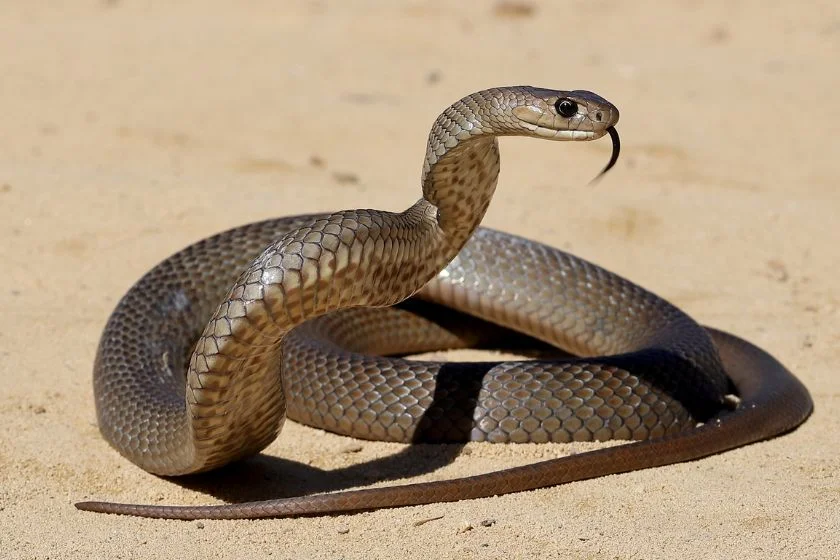
The term “common brown snake” is frequently used to describe the eastern brown snake, which is said to be the second-most poisonous land snake in the world after the inland taipan.
It is an extremely venomous snake belonging to the Elapidae family. The native range of the species includes southern New Guinea and eastern and central Australia.
Except for Tasmania, it inhabits all of eastern Australia. It can be found there as well.
These brown snakes can be found in a variety of settings; they can dwell anywhere but in the rainforest and the mountains. They are particularly common in meadows, wooded areas, and open grasslands.
Inland Taipan (Oxyuranus microlepidotus)
The inland taipan is a species of highly venomous snake in the family Elapidae, sometimes known as the western taipan, the small-scaled snake, or the terrible snake.
Central and eastern Australia’s semi-arid regions are home to the species. Cracked clay and loamy soils are the main habitats for inland taipans. They can also be found in rocky outcrops and dunes.
Mulga Snake (Pseudechis australis)
The king brown snake is a highly venomous snake indigenous to northern, western, and central Australia and belongs to the Elapidae family.
The mulga snake is its alternate popular name, even though it inhabits environments other than mulga.
Almost naked gibber or sandy deserts, hummock grasslands, chenopod scrublands, and forests are among the habitats of mulga snakes, which typically seek refuge close to people in mounds of trash, burrows, and deep soil cracks.
Rainforests do not contain them. Except for Victoria and Tasmania, most of Australia’s states are home to mulga snakes.
Pythons (Pythonidae)
Africa, Asia, and Australia are home to the nonvenomous snake family known as pythons. They are among the largest snakes on the planet.
Depending on the species, pythons can be found in rocky outcrops, desert sand hills, grasslands, marshes, woodlands, and rainforests.
The most well-known are the Carpet Python (Morelia spilota) in Queensland and the Diamond Python (Morelia spilota spilota) in eastern NSW and Victoria.
They are most likely the snakes that are most frequently seen in suburban backyards.
Australian native snakes include:
- Australian scrub (Simalia kinghorni)
- Spotted Python (Antaresia maculosa)
- Olive Python (Liasis olivaceus)
- Woma Python (Aspidites ramsayi)
- Water Python (Liasis fuscus)
- Black-headed Python (Aspidites melanocephalus)
- Amethystine Python (Morelia amethistina)
Common Death Adder (Acanthophis antarcticus)
An Australian native species of death adder is the common death adder. It is among the most poisonous terrestrial snakes in the world and Australia.
The eastern coast of Australia’s forests, woodlands, grasslands, and heaths are home to the common death adder.
The Northern Territory, Western Australia, and the western portions of South Australia are more sparsely populated than the eastern and coastal southern parts of Australia, including Queensland, New South Wales, and South Australia. Victoria is no longer home to any of these species.
Mud Adder (Denisonia devisi)
The mud adder is a poisonous snake in the family Elapidae, usually referred to as De Vis’ banded snake or Devis’ banded snake. Both the common and scientific names honor Charles Walter De Vis.
Several areas of eastern Australia, notably South West Queensland, northern New South Wales, north-west Victoria, and (more recently) South Australia, are home to the species.
The mud adder prefers low-lying regions, especially those that are close to areas that experience seasonal floods.
It primarily hunts frogs and ambushes its victim. In warm weather, they are nocturnal and live in soil crevasses.
Tiger Snake (Notechis scutatus)
Tiger snakes are huge, venomous snakes found in Tasmania and southern Australia, notably its coastal islands.
Although they can be found in various settings, these snakes are most frequently found near creeks, dams, rivers, marshes, or other habitats near watercourses.
Although tiger snakes typically live on the ground, they have been observed climbing small trees and bushes.
The southern coast of Australia, including southern Queensland, eastern and southern New South Wales, Victoria, and south-eastern Australia, are all home to the tiger snake. Tiger snakes can be found in Victoria over much of the state.
Native Fish in Australia
Australia is home to many freshwater lakes and a wide variety of marine fisheries. A large variety of fish inhabits its waters, around 25% of which are native to the nation.
Inland rivers, lakes, streams, freshwater springs, mangrove swamps, coral reefs, seagrass beds, and deep ocean waters are among the habitats for fish in Australia. Popular native fish include the following:
Murray Cod (Maccullochella peelii)
The Murray cod belongs to the family Percichthyidae and is a sizable predatory freshwater fish native to Australia.
Despite the species’ common name of “cod,” it is unrelated to the marine cod species found in the Northern Hemisphere.
The Murray Cod lives in a wide variety of habitats, from slow-moving, muddy lowland rivers and billabongs to clean, stony streams like those found on NSW’s upper western highlands.
Murray cod are usually found in the major tributaries and main waterways of rivers.
Cockatoo Waspfish (Ablabys taenianotus)
This tiny fish is a member of the Scorpaenidae family of scorpionfishes. Due to its resemblance to a leaf moving in the water, the cockatoo waspfish is also known as the Leaf Fish.
This species can be found throughout the tropical West Pacific Ocean, from Indonesia to Australia and Malaysia to Japan. They can be found in seagrass Zosteraceae fields and on sand, silt, or rubble-covered bottoms.
Australian Bass (Macquaria novemaculeata / Percalates novemaculeata)
The Percichthyidae family includes small – to medium-sized fish like the Australian bass. It is mostly a freshwater fish found in streams and rivers along Australia’s east coast.
From the Mary River in southern Queensland to the Gippsland Lakes in Victoria, they can be found in south-eastern coastal waterways.
Western Carp Gudgeon (Hypseleotris klunzingeri)
There are various species of carp gudgeon, including the western variety. The Murray-Darling River system in Australia is home to these tiny perciform fish, which are similar in size, shape, and color.
They are most frequently found in lowland areas, though some have also been seen in higher terrain. They can frequently be found in smaller creeks, billabongs, and the banks of bigger rivers.
Australian Grayling (Prototroctes maraena)
The Australian grayling is a freshwater fish belonging to the Actinopterygii class and Retropinnidae family.
It is primarily found in coastal rivers in Tasmania and southern Australia. Due to its cucumber-like aroma was also known as the cucumber mullet or cucumber herring in previous decades.
Starry Triggerfish (Abalistes stellaris)
The flat-tailed triggerfish is another name for the starry triggerfish, a member of the Balistidae family.
It is an oviparous, innocuous bottom dweller. You can find this triggerfish in mud, silty, sandy bottoms, and coral reefs.
In the Indo-West and Central Pacific, this species can be found. It is well-known throughout Australia, from Western Australia’s southwest to the northwest and from Queensland’s northern Great Barrier Reef south to New South Wales’ central coast.
Other native fishes of Australia are:
- Australian rainbowfish (Melanotaenia fluviatilis)
- Archerfish (Toxotes)
- Tandanus Catfish/Eel-tailed catfish (Tandanus tandanus)
- Flat Needlefish (Ablennes hians)
- Queensland Lungfish (Neoceratodus forsteri)
- Koaro Climbing Galaxias (Galaxias brevipinnis)
- Macquarie Perch (Macquaria australasica)
Most Dangerous Animals in Australia
Australia is home to several deadly animals that could harm people. The following are some of the most deadly creatures in Australia: sharks, crocodiles, snakes, spiders, and jellyfish.
There are numerous incidents of these creatures attacking people every year. These assaults can sometimes be lethal.
When swimming, surfing, or wandering in regions where these animals may be present, it is crucial to be aware of the risks they bring and to take appropriate precautions.
Australian Box Jellyfish (Chironex fleckeri) (aka Boxfish, Sea Wasp, Fire Medusa, or Stinger)
Cnidarian invertebrates, known as box jellyfish, are easily identified by their box-like (or cube-shaped) bodies. They are members of the class Cubozoa.
They produce strong venom that is released when their tentacles are touched. Their stings cause excruciating pain and frequently result in human death.
The world’s strongest venom is produced by this transparent animal, even though it lacks teeth and claws. Since the first report in 1883, C. fleckeri has been implicated in at least 79 fatalities in Australia.5
According to recent reports, a 17-year-old teenager passed away after being stung while swimming at a beach in western Cape York, Queensland.6
Saltwater Crocodiles (Crocodylus porosus) (aka salties)
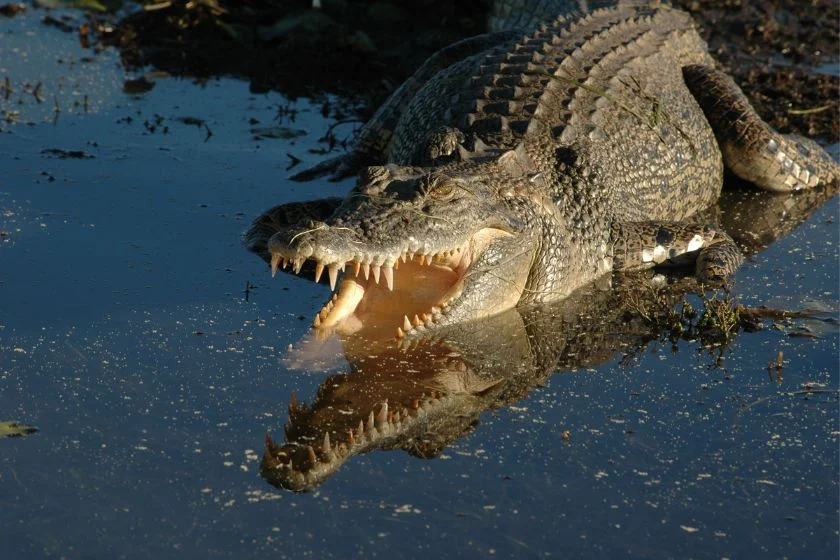
A native of saltwater habitats and brackish wetlands, the saltwater crocodile can be found from the east coast of India through Southeast Asia, the Sundaic region, northern Australia, and Micronesia.
Since 1996, it has been categorized as Least Concern on the IUCN Red List. Its range was extensively hunted for its skin until the 1970s, and it is now endangered due to unlawful hunting and habitat destruction. It is thought to be harmful to people.7
The saltwater and Nile crocodiles have the strongest propensities to view people as prey among all crocodilians.
The saltwater crocodile has a lengthy history of attacking people who trespass into its habitat without permission.
If the crocodile can make direct contact, it is unlikely to survive a direct predatory attack due to its strength, terrifying size, and speed.
Australia is also home to freshwater crocodiles, but unless you’re insane enough to provoke them purposefully, they are not harmful to people.
Blue-ringed octopus (Hapalochlaena maculosa)
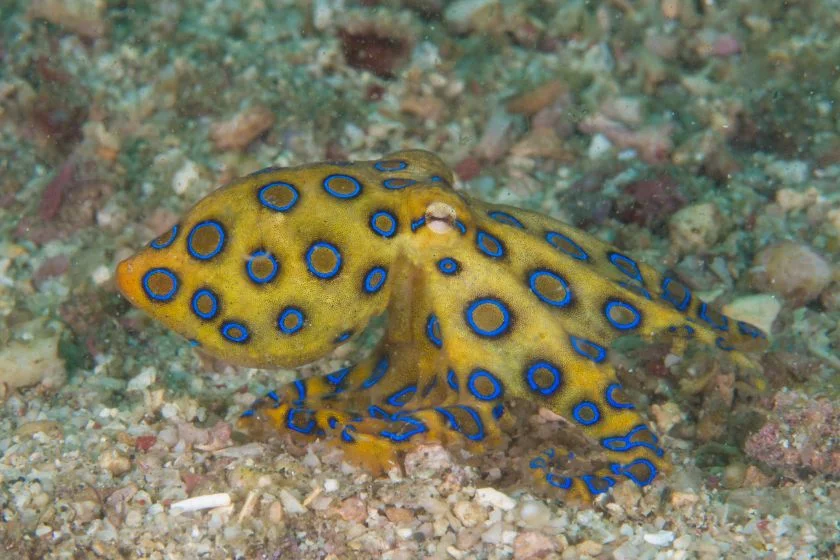
In the Pacific and Indian oceans, from Japan to Australia, blue-ringed octopuses are a highly venomous octopus species found in tidal pools and coral reefs.
They can be recognized by their characteristic blue and black rings, which change color dramatically when the animal is attacked, and their yellowish skin.
Despite its small size, the blue-ringed octopus has enough venom to kill 26 adult people instantly.
Numerous victims do not realize they have been bitten until respiratory depression and paralysis set in since their bites are small and frequently painless.
Ensure you avoid getting bitten because there is no antivenom for blue-ringed octopus bites.
Stonefish (Synanceia)
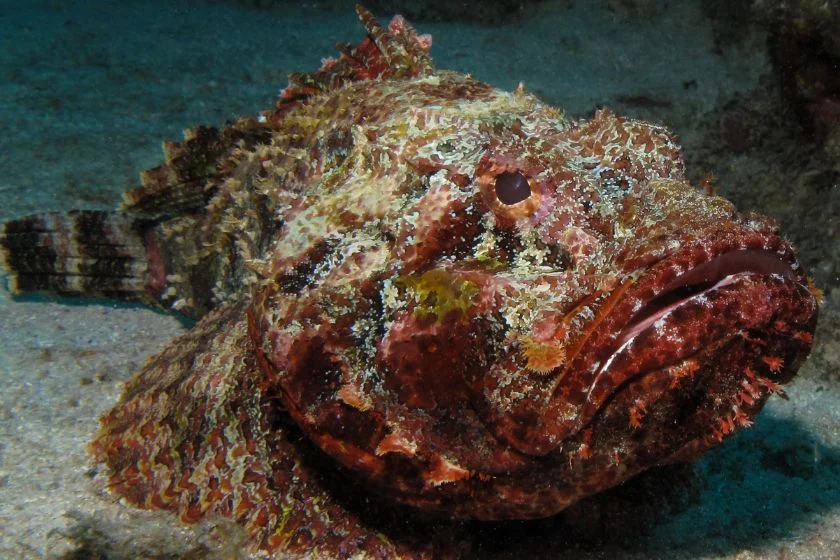
The Indo-Pacific coasts are home to this genus of ray-finned fish, a member of the Synanceiinae subfamily.
The stonefish, which belongs to the Scorpaenidae family, is poisonous, hazardous, and deadly to people. They are the known fish with the greatest poison.
Redback spider (Latrodectus hasselti) (aka Australian black widow)
The highly venomous redback spider also referred to as the Australian black widow, is found throughout Australia, Southeast Asia, and New Zealand.
It is thought to have originated in South Australia or the nearby Western Australian deserts.
The redback spider has historically caused more envenomations in Australia than any other animal, necessitating antivenom.
According to estimates, around 2,000 and 10,000 people are bitten by redback spiders each year in Australia.8 The larger female spider causes nearly all redback spider bite incidents.
Although several occurrences have been documented, it was previously believed that the tiny male could not envenomate a human.
Redback spider bites have the potential to be fatal, especially in young children, so any bite should be handled with extreme caution.
Sydney Funnel-web Spider (Atrax robustus)
One of the most hazardous spiders in the world is the Sydney funnel web. It belongs to a family of spiders called Australian funnel-web spiders.
Eastern Australia is home to the venomous Sydney funnel-web spider, a species often found within a 100-kilometer radius of Sydney.
Sydney funnel-web bites are extremely painful at first, but if neglected, they can result in serious sickness or even death in people.
At least one instance of a young infant passing away within 15 minutes of being bitten by a funnel web has been documented.
Stingray (Myliobatoidei)
A group of cartilaginous sea rays is called stingrays. They belong to the Myliobatiformes Order.
These rays may seem calm as they move through the shallow water, but they may be highly dangerous because they can weigh up to 350 kg and have venomous barbs. Recently, there have been a record number of stingray encounters abroad.
Stingrays can sting you and are harmful. Their tails have venomous stingers that are dangerous to humans.
Especially with heart injury, their stings can result in serious morbidity and even death, necessitating prompt medical intervention.
Extinct Australian Animals
Unfortunately, Australia is home to a lot of extinct creatures. The following are some of the more well-known extinct Australian animals:
Thylacine (Thylacinus cynocephalus) (also Tasmanian Tiger)
The thylacine was an extinct carnivorous marsupial indigenous to Tasmania, New Guinea, and the Australian continent.
It is currently extinct, and the last live specimen was discovered in Tasmania in 1930.
Due to its striped lower back, it is also referred to as the Tasmanian tiger or Tasmanian wolf (because of its canid-like characteristics).
Desert bandicoot (Perameles eremiana)
The desert bandicoot was an extinct bandicoot from Australia’s central, dry region. On the Canning Stock Route in Western Australia, the final specimen was discovered in 1943.
Scientists thought that habitat loss was as much of a factor in the desert bandicoot’s decline and eventual extinction as an increase in the number of predators like cats and foxes.
Baru (Baru)
The Australian mekosuchine crocodilian genus Baru is extinct. The Aboriginal term “Baru” means “crocodile’s ancestor.” it measured around 4 m (13 ft) in length and was semi-aquatic.
Semi-aquatic in nature, it lived in moist woodlands around freshwater pools, ambushing food like modern species.
Lesser Bilby (Macrotis leucura)
A marsupial that resembled a rabbit, the lesser bilby is sometimes referred to as the yallara, the lesser rabbit-eared bandicoot, or the white-tailed rabbit-eared bandicoot.
This species, which grew to the size of a juvenile rabbit, lived in the Central Australian deserts. It has been thought to be extinct since the 1950s and 1960s.
Numerous factors were implicated in the lesser bilby’s population fall and eventual extinction.
The extinction of this species has been attributed to several factors, including the domestication of foreign predators like the cat and fox, the introduction of these animals into Australia, Indigenous Australians’ use of them as prey, competition with rabbits for food, changes in the fire regime, and habitat degradation.
Bramble Cay Melomys (Melomys rubicola)
In the family Muridae and subfamily Murinae of rodents, the bramble cay melomys, also known as the bramble cay mosaic-tailed rat, is a recently extinct species.
It was a unique species that could only be found on the remote Bramble Cay, a low-lying coral cay in Australia’s Great Barrier Reef with a habitable area of around 5 acres.
As the sole mammal indigenous to the reef, its disappearance was noted as the first mammal species extinction brought on by anthropogenic climate change.
The Australian government and the International Union for Conservation of Nature (IUCN) formally declared it extinct in February 2019 and May 2015, respectively.
Southern Pig-footed Bandicoot (Chaeropus ecaudatus)
The southern pig-footed bandicoot is a small species of herbivorous mammal found in Australia’s dry and semi-arid plains.
Since the middle of the 20th century, it has been considered extinct; it is said to have disappeared from its last habitat in southern Australia by 1945. It was most likely the first of the two Chaeropus species to become extinct.
Bluff Downs Giant Python (Liasis dubudingala)
Sadly, Australia has lost more mammal species to extinction than any other nation. An extinct species of snake from Queensland, Australia, known as the Bluff Downs enormous python, lived in the Early Pliocene.
Numerous creatures, including Crescent Nailtail Wallabies and Desert Rat-kangaroos in central Australia, are now extinct.
Best Places to See Wildlife In Australia
Australia is blessed with an exceptional diversity of fauna, including species that are unique to our planet.
While visiting zoos, sanctuaries, and conservation parks are great for a playful encounter, nothing compares to going into the wild to witness animals in their natural setting.
Here are Australia’s top wildlife viewing locations:
- Montague Island, New South Wales
- Rottnest Island, Western Australia
- Phillip Island, Victoria
- Kangaroo Island, South Australia
- The Eyre Peninsula, South Australia
- Great Barrier Reef, Queensland
- Ningaloo Reef, Western Australia
- Daintree Rainforest, Queensland
- Fraser Island, Queensland
- Magnetic Island, Queensland
- Byron Bay, New South Wales
- Mission beach
- Mackay Region
- Great Keppel Island
- Heron Island
- Bundaberg
- Nymboida River, etc.
Wildlife Parks and Zoos In Australia
- Flinders Chase National Park on Kangaroo Island
- Twelve Apostles & Port Campbell National Park on Cape Otway
- Cradle Mountain National Park-Lake St Clair National Park, Tasmania
- Mary River, near Kakadu National Park, Northern Territory
- Featherdale Wildlife Park
- Symbio Wildlife Park
- Taronga Western Plains Zoo in Dubbo, etc.
Wrap-up
Australia is known for having some of the world’s most unusual and fascinating animals. There is no shortage of fascinating species to learn about, from crocodiles and snakes to kangaroos and koalas.
We hope this article has given you a glimpse of the astounding variety of animals found in Australia. Therefore, the next time you consider a trip to Australia, include some wildlife viewing.
Latest Australian Wildlife Articles
References & Notes
- Hugo G., Wall J., and Young M. 2015. The Southeast Asia-Australia Regional Migration System: Some Insights into the “New Emigration”. Migration Policy Institute.
- 1788 to 1810 – Early European Settlement. The Parliament of New South Wales.
- Birds of Australia. Wildlife Tourism Australia.
- Snakes. NSW Environment and Heritage.
- Warrell A. D. 2013. 134 – Animals Hazardous to Humans. Hunter’s Tropical Medicine and Emerging Infectious Disease (Ninth Edition).
- Rigby M. 2021. Teenage boy dies from box jellyfish sting in Cape York — the first death from the animal in 15 years. ABC News.
- Than Z. K., Strine T. C., Et. al. 2020. Estimating population status and site occupancy of saltwater crocodiles Crocodylus porosus in the Ayeyarwady delta, Myanmar: Inferences from spatial modeling techniques. Global Ecology and Conservation.
- Latrodectus hasselti Thorell, 1870 in Döring M (2022). English Wikipedia – Species Pages. Wikimedia Foundation.
